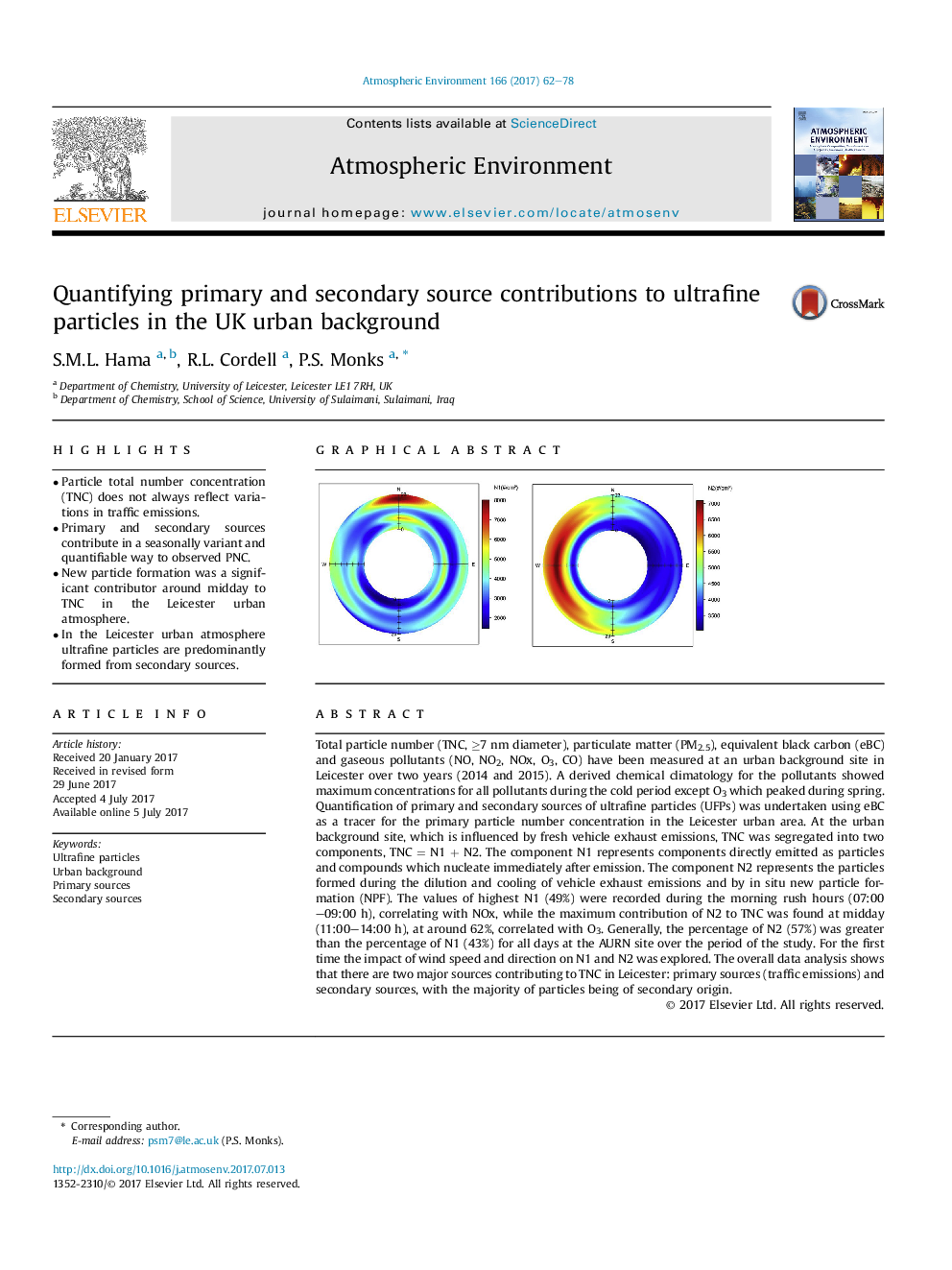| Article ID | Journal | Published Year | Pages | File Type |
|---|---|---|---|---|
| 5752832 | Atmospheric Environment | 2017 | 17 Pages |
â¢Particle total number concentration (TNC) does not always reflect variations in traffic emissions.â¢Primary and secondary sources contribute in a seasonally variant and quantifiable way to observed PNC.â¢New particle formation was a significant contributor around midday to TNC in the Leicester urban atmosphere.â¢In the Leicester urban atmosphere ultrafine particles are predominantly formed from secondary sources.
Total particle number (TNC, â¥7 nm diameter), particulate matter (PM2.5), equivalent black carbon (eBC) and gaseous pollutants (NO, NO2, NOx, O3, CO) have been measured at an urban background site in Leicester over two years (2014 and 2015). A derived chemical climatology for the pollutants showed maximum concentrations for all pollutants during the cold period except O3 which peaked during spring. Quantification of primary and secondary sources of ultrafine particles (UFPs) was undertaken using eBC as a tracer for the primary particle number concentration in the Leicester urban area. At the urban background site, which is influenced by fresh vehicle exhaust emissions, TNC was segregated into two components, TNC = N1 + N2. The component N1 represents components directly emitted as particles and compounds which nucleate immediately after emission. The component N2 represents the particles formed during the dilution and cooling of vehicle exhaust emissions and by in situ new particle formation (NPF). The values of highest N1 (49%) were recorded during the morning rush hours (07:00-09:00 h), correlating with NOx, while the maximum contribution of N2 to TNC was found at midday (11:00-14:00 h), at around 62%, correlated with O3. Generally, the percentage of N2 (57%) was greater than the percentage of N1 (43%) for all days at the AURN site over the period of the study. For the first time the impact of wind speed and direction on N1 and N2 was explored. The overall data analysis shows that there are two major sources contributing to TNC in Leicester: primary sources (traffic emissions) and secondary sources, with the majority of particles being of secondary origin.
Graphical abstractDownload high-res image (326KB)Download full-size image
